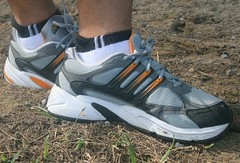Generally, digestion is the break down of food in such a way that it is soluble and can be easily absorbed.
The process of DIGESTION in human involved the following:
The process of DIGESTION in human involved the following:
- INGESTION - Taking in food into the mouth is simply ingestion.
- DIGESTION - The breaking down of food (physically and chemically) into smaller pieces (as a result of physical digestion) and eventually into soluble and diffusible molecules that can be absorbed into the body cells (as a result of chemical digestion).
- ABSORPTION - The process whereby digested food materials are taken into the body cells.
- ASSIMILATION - The process whereby some of the absorbed food materials are converted into new protoplasm (used later for growth) or used by respiring cells to provide energy.
- EGESTION - Removal of undigested food materials from the body.
PHYSICAL DIGESTION VERSUS CHEMICAL DIGESTION?
- Physical digestion is a process whereby food is broken down into smaller pieces so as to increase the surface area of the food. This enables the food to be easily digested chemically. Physical digestion occurs by means of chewing action of the teeth and the contraction and relaxation of the circular and longitudinal muscles along the alimentary canal (peristalsis). At the end of physical digestion, the food is still chemically unchanged!!!
- Chemical digestion is a process whereby the food molecules are broken down into smaller molecules that can be easily absorbed by the body cells. This occurs with the help of ENZYMES and unlike physical digestion, at the end of chemical digestion, the food is chemically changed.
- For example, starch is still starch after physical digestion but after chemical digestion starch is changed to maltose (as in the mouth).
